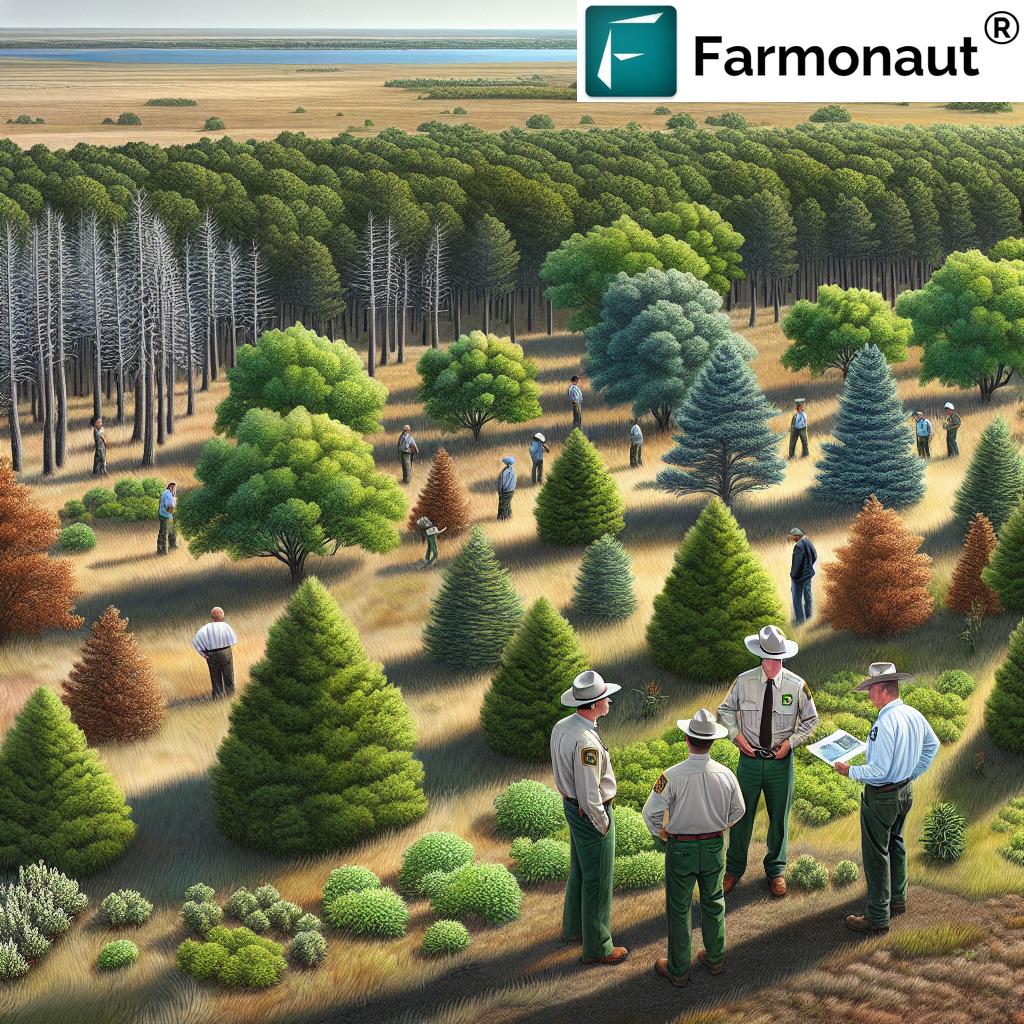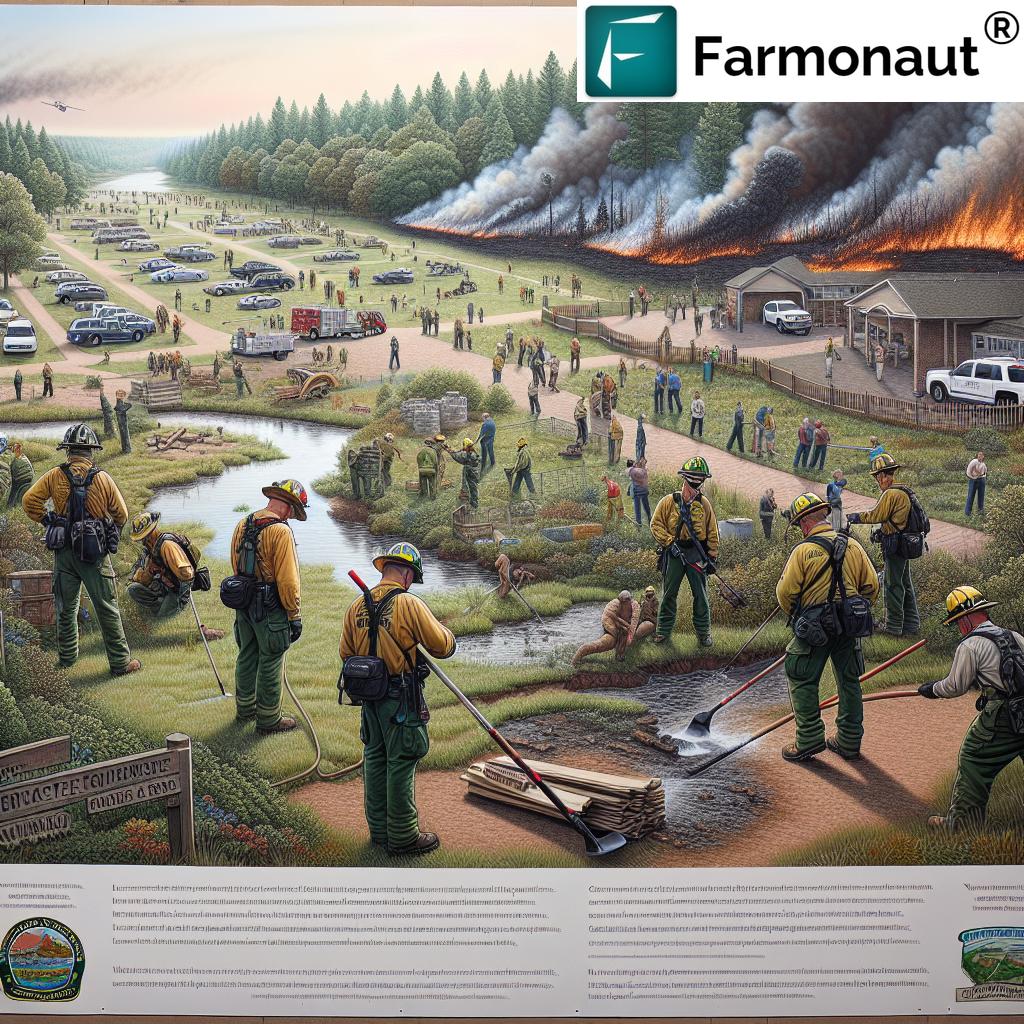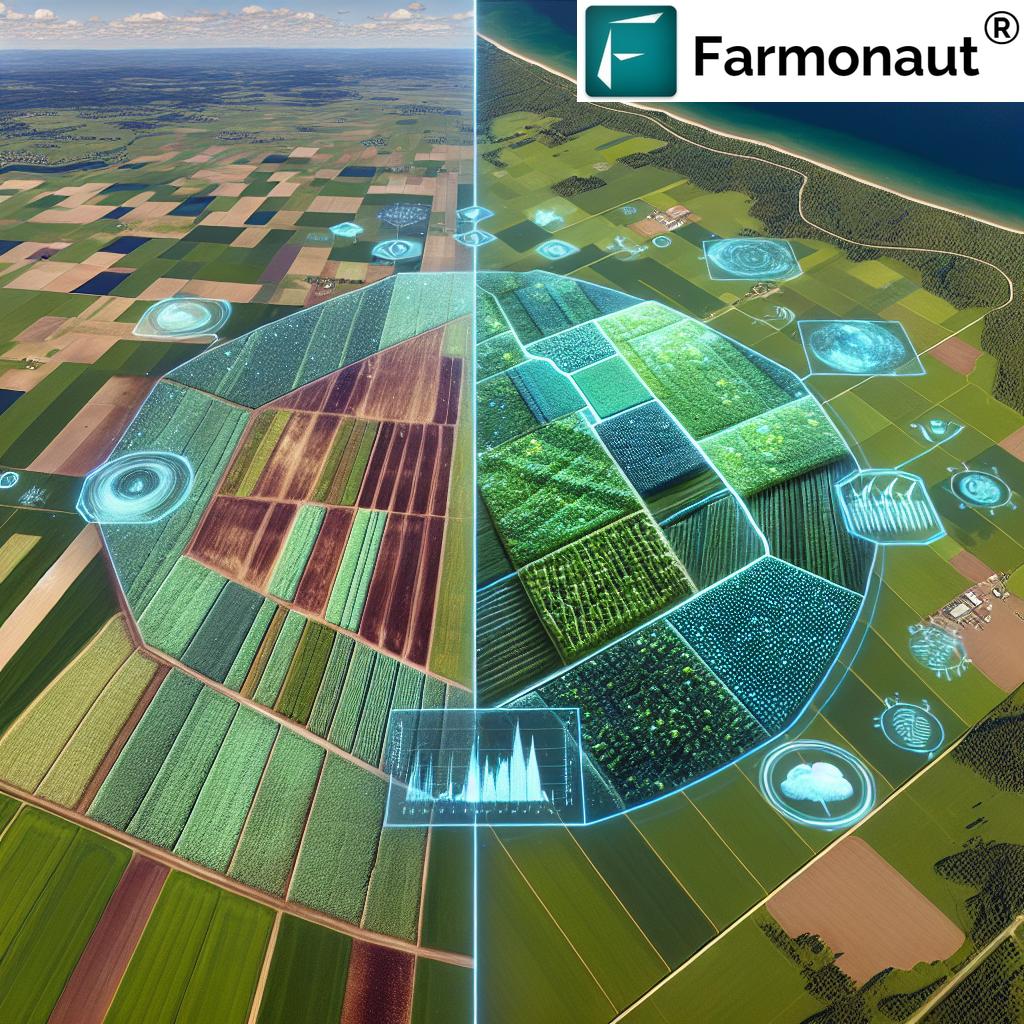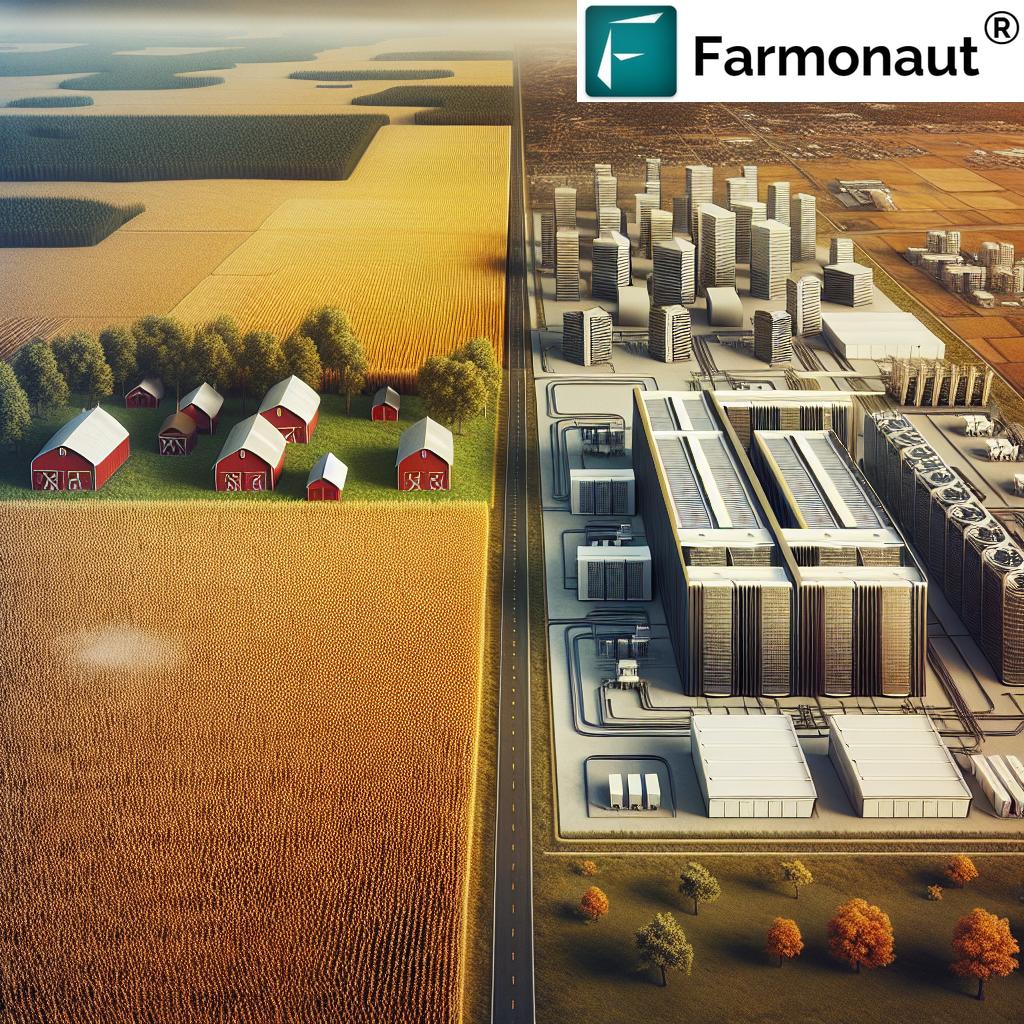Kansas Forest Service: 7 Powerful Ways Trees Shape Local Communities
“Kansas community forestry programs have helped plant over 1 million trees, enhancing local sustainability and biodiversity.”
Welcome to our comprehensive exploration of the Kansas Forest Service—a vital agency dedicated to nurturing our state’s woodlands, supporting local communities, and safeguarding some of Kansas’s most precious natural resources. In this post, we’ll uncover the 7 powerful ways that trees and forest stewardship shape our local communities—from wildfire prevention in Kansas to innovative community forestry programs, strategic tree planting in Kansas, and conservation initiatives that benefit both people and the environment for generations to come.

Table of Contents
- Introduction to Kansas Forest Service
- Why Kansas Trees Matter: Historically and Today
- 7 Powerful Ways Kansas Forests Shape Local Communities
- Community Forestry Programs and Their Impact
- Conservation Tree Planting in Kansas
- Forest Fire Management and Wildfire Prevention in Kansas
- Supporting Private Landowner Tree Programs and Rural Communities
- Resources, Training and Workforce Development
- Farmonaut: Satellite Technology in Resource Management
- Comparison Table of Community Forestry Program Impacts in Kansas
- Frequently Asked Questions (FAQ)
- Join the Movement for Kansas Trees
Introduction to Kansas Forest Service & Our Community Focus
At the heart of our state’s forest initiatives, the Kansas Forest Service stands as a beacon of conservation, education, and outreach. Founded in 1887 and inscribed in the mission of Kansas State University’s Research and Extension, our agency brings vital forest, fire, and natural resource management services to every corner of Kansas. Our staff works closely with private landowners, district offices, rural communities, and local partners to keep our forests thriving—not just for now, but for future generations.
Our core directives include:
- Conservation tree and shrub planting programs—empowering private landowners and towns to enrich the landscape
- Fire management and wildfire prevention in Kansas
- Community forestry programs for urban and rural town sustainability
- District forester support for expert local advice
- Conservation resources and public education initiatives
With headquarters in Manhattan, Kansas, and strong connections with communities and the Kansas State University system, we are deeply rooted in every district. We’re proud to say: Kansas forests, and the people who care for them, are our business.
Why Kansas Trees Matter: From Eastern Cottonwoods to Community Canopies
If we pause to reflect, many of us can recall a favorite tree—an old oak in the city park, an evergreen dazzling at the crossroads during the winter holidays, or the weeping willow in our grandmother’s backyard. Trees aren’t just part of our surroundings—they’re central to our community’s identity and familial memories. Matthew Norville, our Community Forestry Program Coordinator, emphasizes: “People hold trees close to their heart. Trees are both a physical and emotional part of every community.”
- 10% of the state’s total area is forested: That is over 5.2 million acres of woodlands, scattered across valleys, hills, streams, and urban greenways.
- Wildlife sanctuaries and windbreaks: From Eastern cottonwoods lining riverbanks to native maples and sturdy oaks, Kansas tree species are the unsung heroes supporting our local ecology, offering habitats for animals and birds.
- Cultural and recreational value: Our community parks, small towns, and rural landscapes are shaped by these living monuments, providing shade, recreation, and beauty for more than 150 years.

Kansas Forest Service: A Partnership Model for Forest Stewardship
It’s important to realize that Kansas has no public or national state forests. The vast majority of our acres are private land. That means the Kansas Forest Service must operate through unique community partnerships, collaborating closely with local landowners, towns, and districts to expertly manage, restore, and protect the landscape.
“Kansas Forest Service manages 5.2 million acres, supporting wildfire prevention and conservation for future generations.”
7 Powerful Ways Kansas Forests Shape Local Communities
Let’s explore the seven principal ways trees and forestry management in Kansas contribute to thriving communities, environmental health, and economic vitality:
- Environmental Protection & Resilience: Trees combat soil erosion, stabilize riverbanks, and maintain water quality. Eastern cottonwoods and other riparian plantings are essential in reducing sediment and nutrient runoff.
- Wildfire Prevention & Response: Woody encroachment, or the spread of trees/shrubs into grasslands, can rapidly escalate wildfire risk. The Kansas Forest Service removes hazardous trees, provides firefighting equipment in Kansas to volunteer fire districts, and delivers strategic guidance to minimize danger.
- Urban & Community Livability: Parks, city canopies, and urban woodlots cool our streets, sequester CO₂, reduce pollution, and nurture recreational spaces for residents of all ages.
- Private Landowner Programs: We offer private landowner tree programs and shrub planting consultations so families across Kansas can benefit from tailored conservation plans—including windbreaks, orchards, timber, and more.
- Education & Community Engagement: Our community forestry programs provide workshops, field days, and school sessions, helping shape the next generation of conservationists.
- Biodiversity & Wildlife Habitat: Strategic tree planting in Kansas supports birds and pollinators while safeguarding genetic diversity in our tree species.
- Sustainable Economic & Workforce Development: From the Kansas Rural Fire and Workforce Development Center to regional job creation, forestry services underpin our state’s rural economies.
Community Forestry Programs and Their Impact
Community forestry lies at the heart of the Kansas Forest Service strategy for sustainability. Our dedicated staff—including district foresters, community forestry coordinators, and field management officers—collaborate with towns and municipalities of all sizes. Whether a city of tens of thousands or a hamlet of 98, every community receives technical expertise and canopy management plans tailored to its unique needs.
- Tree Inventory & Canopy Studies: By mapping urban and rural tree species in Kansas, we identify health risks, prioritize new plantings, and budget for maintenance or removal of dying trees.
- Strategic Urban Forestry Management: Our plans guide cities through the challenges of invasive pests, severe weather, and changing climate patterns—the very real threats to community forests.
- School & Youth Initiatives: Each year, our team organizes classroom visits and field trips to inspire young Kansans about natural resources, the importance of ecology, and conservation careers.
- Community Partnerships: We connect landowners to federal cost-share programs and provide ongoing support for conservation projects, maximizing access for underserved towns and rural communities.
The result? More resilient, greener, and healthier places to live—where every Kansan plays a role in shaping tomorrow’s landscape.

Conservation Tree Planting in Kansas
Our Conservation Tree Planting Program is one of the most popular services offered at our Manhattan headquarters. Each year, hundreds of thousands of tree and shrub seedlings are grown, processed, and shipped to families, towns, and districts across the state.
What Is the Conservation Tree & Shrub Planting Program?
- Wildlife Habitat: Our plantings provide essential nesting and food sources for birds, mammals, and pollinators, directly enhancing biodiversity statewide.
- Windbreaks for Farms: Landowners benefit from reduced wind erosion on cropland and pastures—boosting yield and protecting soil health.
- Riparian Zone Restoration: Trees along streams and riverbanks prevent erosion, filter runoff, and improve water quality.
- Urban Green Infrastructure: New trees in parks and along city streets cool summer heat, absorb CO₂, and create inviting public areas for recreation.
For guidance on optimizing tree planting for your property or municipality, discover our Crop Plantation & Forest Advisory services—delivering precision, expertise, and tailored plans for every Kansas landowner.
Forest Fire Management and Wildfire Prevention in Kansas
As climate extremes intensify, wildfires are becoming hotter and more frequent—now occurring in seasons when they were once rare. Woody encroachment (the unchecked spread of shrubs and trees into grasslands) only increases the risk and severity of these fires. The Kansas Forest Service is on the front lines of wildfire prevention in Kansas.
Key Initiatives for Fire Safety:
- Federal Excess Property Programs: Supplying firefighting equipment in Kansas to volunteer firefighter departments through surplus federal resources—more than $43 million in value serving over 500 districts.
- Firefighter Property and Equipment Donations: Helping rural towns upgrade fire engines and gear for home and forest protection at a fraction of the retail cost.
- On-site Fire Management Expertise: Our field offices dispatch fire management officers and district foresters to consult on fire strategy, land management, and emergency response.
- Removing Dead or Hazardous Trees: Proactively taking down diseased or dangerous trees from urban and rural districts to protect life and property—with an emphasis on “the right trees in the right place.”
- Workforce Development: Training a new generation of rural and volunteer firefighting teams through advanced resources and real-world simulation at the Kansas Rural Fire and Workforce Development Center.
For large-scale operations, agribusinesses and cooperatives can benefit from Farmonaut’s Fleet Management tools—enhancing logistical efficiency and safety during wildfire season and conservation projects.
Supporting Private Landowner Tree Programs and Rural Communities
Since most Kansas forests stand on private land, our approach is rooted in personalized support and partnerships. Through the expertise of field foresters, we connect landowners with resources including cost-share programs, forest health consultations, and guidance for conservation planning and planting.
Key Services for Private Landowners:
- Strategic Tree and Shrub Planting: Customized plans for windbreaks, timber lots, riparian zones, orchards, and native prairie restoration.
- Federal and Natural Resources Cost-Share Opportunities: Connecting landowners to programs that reduce out-of-pocket costs and boost conservation impact.
- Education and Field Days: Workshops on planting, management, and maintenance to increase landowner knowledge and stewardship.
- District Forester Support: Personalized site visits to advise on forest health, pest control, and invasive species management (such as emerald ash borer or Bradford pear).
For those managing multiple holdings or seeking to scale their farm and forest operations, our Large Scale Farm Management Platform offers integrated, precision-driven tools to optimize land use and resource efficiency.
Resources, Training and Workforce Development
Beyond hands-on conservation work, the Kansas Forest Service invests in the future of forestry through:
- Publications, Research, and Educational Outreach: Our publications and field guides keep Kansans and partners informed about the latest in forest health, best practices, and policy updates.
- University Extension Services: Seamless integration with the Kansas State University extension system empowers us to reach every district, school, and community with up-to-date science and targeted expertise.
- Modern Workforce Development: With the new Kansas Rural Fire and Workforce Development Center, we deliver state-of-the-art training and academic programs to meet the evolving needs of our regional labor force.
Our commitment is unwavering: every town, volunteer department, and landowner in Kansas deserves access to world-class forestry management and conservation resources.
Farmonaut: Satellite & AI Technology for Resource Management
In an era of data-driven decision making, leveraging advanced technology can transform how we manage forests and agriculture. Farmonaut is a pioneering agricultural technology company specializing in satellite-based solutions—making precision agriculture and resource management affordable and accessible for farmers and landowners worldwide.
- Satellite-Based Crop and Tree Health Monitoring: Multispectral imaging and NDVI data identify vegetation health and potential problem areas—empowering smarter forestry management in Kansas.
- AI-Powered Advisory: Personalized, real-time recommendations on weather, irrigation, fertilization, and resource use. Discover Carbon Footprinting Tools for real-time insights into CO₂ sequestration and emission management.
- Blockchain Traceability for Supply Chains: For agribusiness and cooperatives, traceability solutions ensure full transparency from farm to consumer, building trust and minimizing risk.
- Fleet and Large Scale Management: Fleet management and large-scale farm platforms streamline conservation projects, wildfire response, and resource logistics.
For developers, researchers, and agencies, robust API access unlocks integration opportunities for real-time satellite, weather, and advisory data: Farmonaut API | API Docs
Leveraging these state-of-the-art tools ensures Kansas remains at the forefront of sustainable agriculture and forestry management.
Comparison Table of Community Forestry Program Impacts in Kansas
A snapshot of our principal forestry initiatives, providing quantitative insight into the environmental, economic, and community impacts across Kansas.
| Program Initiative | Estimated Trees Benefited/Year | Wildfire Risk Reduced (%) | Community Engagement (Estimated Participants) | Environmental Impact (CO₂ Sequestered, Tons/Year) |
|---|---|---|---|---|
| Conservation Tree & Shrub Planting Program | 300,000+ | 15% | 6,000+ | 11,000 |
| Community Forestry Education & Engagement | 80,000+ | 10% | 12,000+ | 2,400 |
| Wildfire Prevention & Firefighter Equipment Programs | 50,000+ | 30% | 2,500+ | 3,800 |
| Invasive Species Management & Tree Health | 40,000+ | 8% | 1,200+ | 1,600 |
| Workforce Development & Volunteer Training | 10,000+ | 20% | 4,000+ | 500 |
Numbers are estimates based on current program scales and available research. Environmental impact references annual direct sequestration by program trees.
Frequently Asked Questions (FAQ)
What is the Kansas Forest Service and what does it do?
The Kansas Forest Service is the state’s lead forestry agency, operating under Kansas State University. We provide conservation, wildfire prevention, tree planting, community forestry, and educational services to landowners, rural and urban communities, and volunteer fire departments across Kansas.
How does tree planting in Kansas benefit my community?
Conservation tree planting reduces soil erosion, improves water quality, increases wildlife habitat, helps lower city heat, and boosts community resilience to climate extremes. Healthy canopies also add aesthetic and recreational value.
How can I get help as a private landowner interested in tree planting or forest management in Kansas?
Contact your district forester through the Kansas Forest Service. We provide free consultations and connect you to cost-share programs, expert planting advice, and ongoing support.
What resources are available for my rural fire department to improve wildfire prevention?
Through programs such as Federal Excess Property and Firefighter Equipment Donation, your department may access advanced firefighting gear, training, and vehicles at minimal or no cost. Reach out to your local field office or the Manhattan headquarters for eligibility details.
How does the Kansas Forest Service fight invasive tree species?
Our team monitors, removes, and manages species such as the Bradford pear and emerald ash borer. Through statewide outreach and technical support, we help keep Kansas trees healthy and ecosystems balanced.
How does Farmonaut support forest and resource management?
Farmonaut offers satellite-driven monitoring of vegetation health, soil moisture, and crop/forest cover—making it easy for farmers and managers to optimize resources, boost yields, and reduce environmental risk. See the app for full features.
Join the Movement: Nurturing Kansas Communities, One Tree at a Time
Our work is, ultimately, about people—not just trees. Whether you are a city planner envisioning greener parks, a volunteer firefighter battling wildfires, a landowner restoring habitat, or a student dreaming of a conservation career, the Kansas Forest Service is your partner in progress. Together, we keep Kansas’s rich forest heritage alive for generations to come.
Ready to take part? Explore satellite-based and precision agriculture tools on the Farmonaut app, available on Web, Android, and iOS.
Developers and agencies interested in integrating satellite, weather, and farm advisory data into your workflow? Check out the Farmonaut API and Developer Docs.
We’re rooted in Kansas, working for its people. Let’s build a greener, safer, and more resilient future—one tree, one community at a time.
















